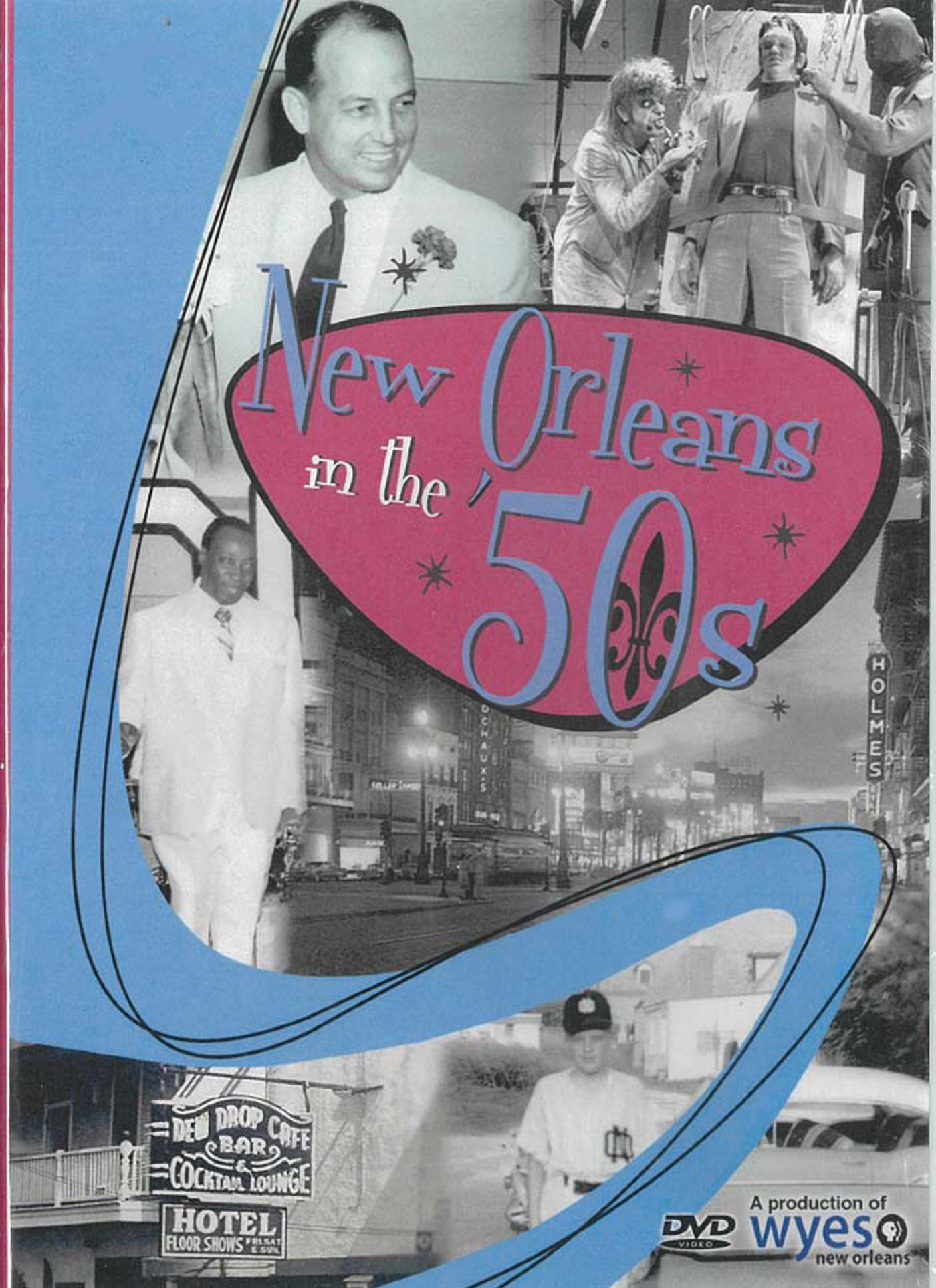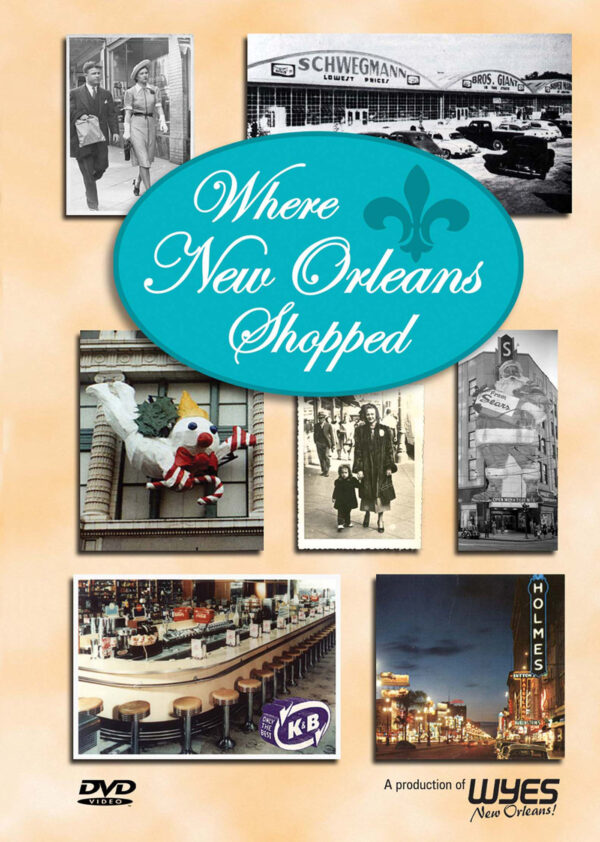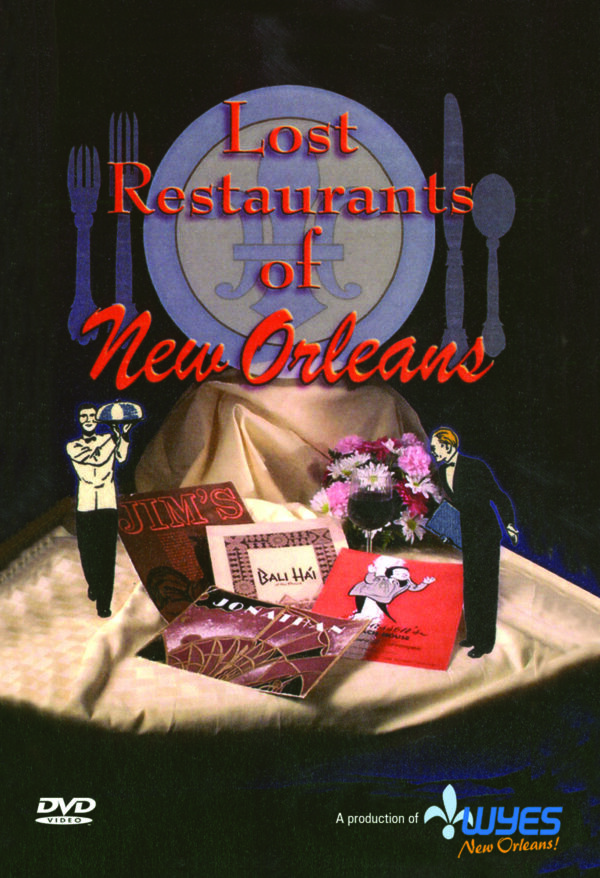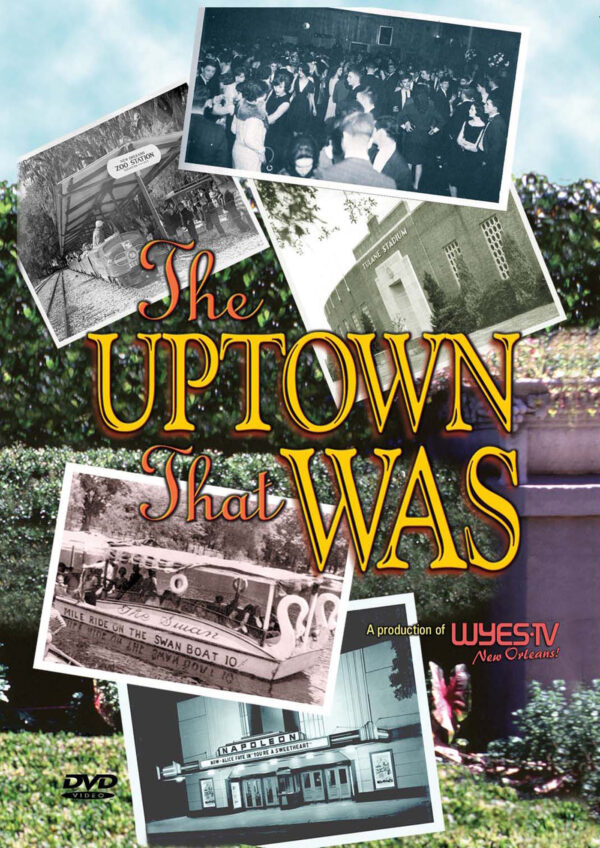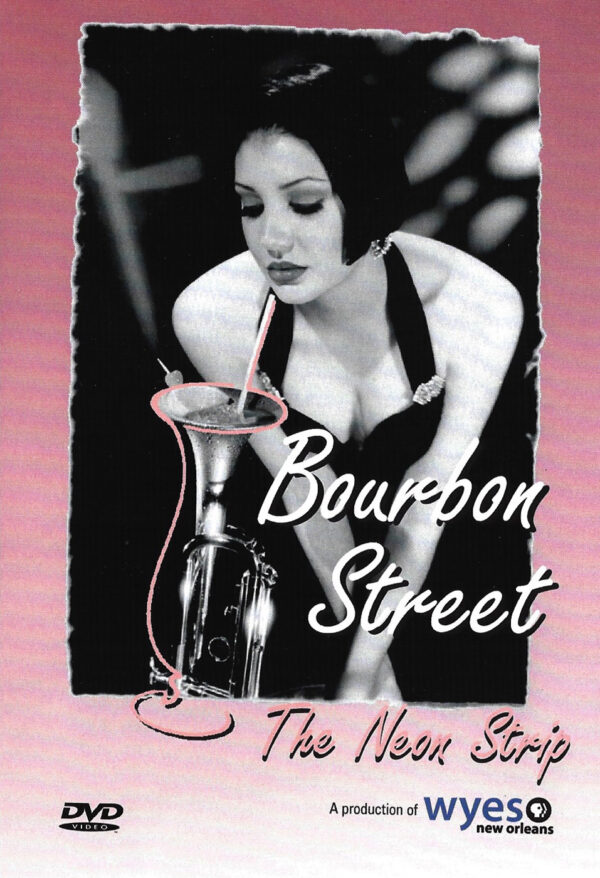$19.95
If ever there was a pivotal decade for the city, it was NEW ORLEANS IN THE ’50s. Program highlights include the early days of local television, including “Popeye and Pals” and “Morgus the Magnificent”; the career of New Orleans Mayor Chep Morrison, whose years in office spanned the decade; the development of the Lakeview and Pontchartrain Park neighborhoods and Canal Street as a regional shopping and entertainment mecca.
Among the local New Orleans notables interviewed for the documentary are New Orleans Council Member-at-Large Jacquelyn Clarkson, writer Ronnie Virgets, retired night club owner Jimmy Anselmo, Rock and Roll Hall of Fame member Dave Batholomew, historian Dr. Raphael Cassimere, former Louisiana Lieutenant Governor Jimmy Fitzmorris, Pontchartrain Park resident Inez Green, New Orleans Magazine Editor/historian Errol Laborde, retired The Times-Picayune columnist Angus Lind, Louisiana Fourth Circuit Court of Appeals Judge Edwin Lombard, and bandleader/singer “Deacon John” Moore.
Running time: 1 hour (approx.)
Description
If ever there was a pivotal decade for the city, it was NEW ORLEANS IN THE ‘50s. WYES’ newest one-hour local documentary premiered on Wednesday, November 16, 2011.
By the ‘50s, WDSU-TV had been on the air for almost three years and was followed by the debut of WWL, WYES and WVUE. Kiddie shows such as “Popeye and Pals” along with “Mrs. Muffin” were big hits. And on Saturday evenings, beginning in 1959, “Morgus the Magnificent” was the program to watch. Radio, long the dominant force for news and entertainment, was changing and becoming a showcase for the city’s bustling rhythm and blues scene.
“The ‘50s was truly a time when the car changed the cityscape,” says producer/narrator Peggy Scott Laborde. “So much of what we’re accustomed to: the Interstate System, Mississippi River Bridge (today called the Crescent City Connection)and the Lake Pontchartrain Causeway, all contributed to a growth spurt, a suburban way of life within the area.”
New Orleans writer Ronnie Virgets observes, “I think New Orleans in the ‘50s was just on the threshold of becoming Americanized a little more in the sense of growing suburbs, but there was still the ‘small town’ part of New Orleans and there was still the part where we felt, ‘Hey, we’re different,’ and we liked it.”
Throughout the ‘50s the city had one mayor, DeLesseps Story Morrison, known to most folks as “Chep.” As a World War II veteran, other local veterans easily identified with this energetic young lawyer. Visible signs of improvement were the thrust of his 16 years in office, along with trying to establish New Orleans as a “Gateway to the Americas” which increased trade and port activity.
While there was some development in Lakeview, it wasn’t until the 1950s that the “new” neighborhood blossomed. Harrison Avenue became the area’s “Main Street.” The Beacon and Lakeview movie theatres both had Harrison Avenue addresses.
Pontchartrain Park was a suburban-style residential development that was designed exclusively for the Black community. Before Civil Rights legislation was passed and with the rise of a Black middle class there was a market as well as a pressing social need.
In addition to being New Orleans’ shopping mecca, Canal Street was home to the Saenger, Loew’s State and Joy Theatres. During the program Jackie Clarkson, New Orleans Councilmemberat- Large, shares her memories.
In addition to Clarkson and Virgets, among the local New Orleans notables also interviewed for the documentary are retired night club owner Jimmy Anselmo, Rock and Roll Hall of Fame member Dave Bartholomew, historian Dr. Raphael Cassimere, former Louisiana Lieutenant Governor Jimmy Fitzmorris, Pontchartrain Park resident Mrs. Inez Green, New Orleans Magazine Editor/historian Errol Laborde, retired The Times- Picayune columnist Angus Lind, Louisiana Fourth Circuit Court of Appeals Judge Edwin Lombard, and musician/singer “Deacon John” Moore.
In addition to Laborde as producer/narrator, the program was edited by Larry Roussarie. Paul Combel is the photographer and Ashli Richard is associate producer.

